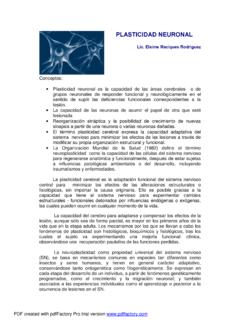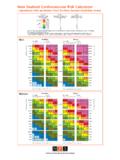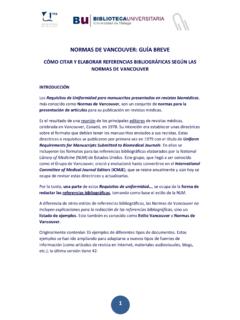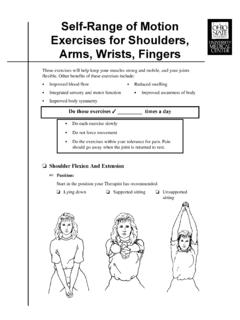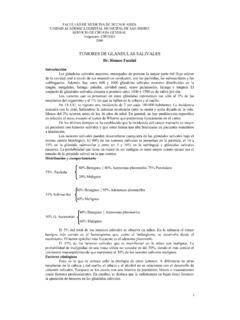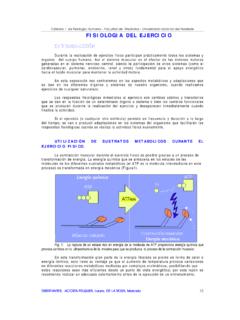Transcription of Chapter 3: Prevalence studies - Infomed
1 A short introduction to epidemiology Chapter 3: Prevalence studies Neil Pearce Centre for Public Health Research Massey University Wellington, New Zealand Birth End of Follow up Death non-diseased . other death symptoms lost to follow up severe disease Study Design Options All epidemiological studies are (or should be). based on a particular population (the source population) followed over a particular period of time (the risk period). The different study design options differ only in how the source population is defined and how information is drawn from this population and time period Incidence and Prevalence Incidence is the number of new cases of the condition over a specified period of time Prevalence is the number of cases of the condition at a particular point in time Chapter 3.
2 Prevalence studies Reasons for doing a Prevalence study Prevalence studies Example of a Prevalence study Prevalence case-control studies Reasons for Doing a Prevalence Study To assess the burden of disease in a population and to assess the need for health services To compare the Prevalence of disease in different populations To examine trends in disease Prevalence or severity over time Chapter 3. Prevalence studies Reasons for doing a Prevalence study Prevalence studies Example of a Prevalence study Prevalence case-control studies P = Prevalence I = incidence P/(1-P) = I x D N(1-p) x I D = duration N = population Cases Non-cases [NP].
3 [N(1-P)]. NP/D. Prevalence studies Number (proportion) of people with the disease at a particular point in time Under certain assumptions: P/(1-P)=ID. POR=I1D1/I0D0. Therefore differences in Prevalence may be due to differences in incidence, differences in duration, or both A Hypothetical Prevalence Study Exposed Non-exposed Ratio Cases 909 476. Non-cases 9091 9524. Total 10,000 10,000. Prevalence Prevalence odds Chapter 3. Prevalence studies Reasons for doing a Prevalence study Prevalence studies Example of a Prevalence study Prevalence case-control studies I nternational S tudy of A sthma and A llergies in C hildhood ISAA.
4 C. The Organisation of ISAAC. EXECUTIVE. and STEERING COMMITTEE. including REGIONAL COORDINATORS. NATIONAL COORDINATORS. COLLABORATING CENTRES. gm/08/96: ISAAC Steering Committee R Anderson U Keil D Strachan E von Mutius S Weiland B Bj rkst n H Williams G Redding S Montefort C Lai I Asher R Beasley JR Shah J Crane S Foliaki E Mitchell J Mallol N Pearce C Robertson N A t-Khaled G Anabwani ISAAC. gm/08/96: ISAA. C. Phases I. Initial overview of the international distribution of the Prevalence and severity of asthma, rhinitis, and eczema in childhood II. Further studies of aetiologic questions will include skin tests for atopy, measurements of lung function and bronchial reactivity, serum IgE levels, physical examination, genetic markers, aeroallergens at home, and clinical management III.
5 Repetition of Phase One after at least 3 years to determine trends in the Prevalence and severity of these diseases gm/08/96: ISAA. C. Phase One methods Design : Multi-centre Prevalence studies with identical methods Study area : Areas with populations differing in lifestyle and environmental exposure Study population : 13-14 year old school children 6 -7 year olds (strongly recommended). Sample size : 3,000 children (minimum 1,000). Study period : July 1992 - December 1995. gm/08/96: ISAA. C. Phase I core instruments: written questionnaires, one page each, on the Prevalence and severity of asthma, rhinitis, and eczema for self-completion in 13 - 14 year olds (compulsory).
6 Video questionnaire on the Prevalence and severity of asthma for self-completion by 13 - 14 year olds (recommended). written questionnaires, one page each, on the Prevalence and severity of asthma, rhinitis, and eczema for self-completion by parents of 6 - 7 year olds (recommended). gm/08/96: Study Centres and Participants 13-14 Year Age Group Region Centre Participants Participation n n %. Africa 10 31,007 93%. Asia-Pacific 35 103,818 94%. Eastern/Northern 17 57,300 90%. Europe Eastern Mediterranean 10 27,460 92%. Latin America 16 46,545 93%. North America 5 12,460 81%. Oceania 10 31,311 91%. Western Europe 51 132,998 84%.
7 Global Total: 155 463,801 92%. ISAAC. gm/08/96: 12 Month Period Prevalence of Asthma Symptoms in 13-14 Year Old Children 20%. 10 to <20%. 5 to <10%. <5%. Key Findings From ISAAC. English-speaking countries have the highest asthma Prevalence in the world There is little variation within the English- speaking countries Other countries in Latin America are also high There is a Northwest-Southeast gradient within Europe Key Findings From ISAAC. There is an inconsistent correlation of asthma Prevalence with affluence (as measured by GNP). There are some areas (West/East Germany, Hong Kong/Guangzhou) with major Prevalence differences within the same ethnic group There is a weak and inconsistent association between asthma Prevalence and that of other atopic conditions such as rhinitis and eczema Chapter 3.
8 Prevalence studies Reasons for doing a Prevalence study Prevalence studies Example of a Prevalence study Prevalence case-control studies Birth End of Follow up Death non-diseased . other death symptoms lost to follow up severe disease A Hypothetical Prevalence Study Exposed Non-exposed Ratio Asthma cases 909 476. Non-cases 9091 9524. Total 10,000 10,000. Prevalence Prevalence odds A Hypothetical Prevalence Case-Control Study Exposed Non-exposed Ratio Asthma cases 909 476. Non-cases 676 709. Total 1585 1185. Prevalence odds Prevalence Case-Control studies This Prevalence case-control study yields the same estimate as would have been obtained by a Prevalence study but with a much smaller number of participants because we include all of the prevalent cases but only a sample of the non-cases Prevalence Case-Control studies Oliveti et al (1996), Prevalence case-control study of asthma in inner city African- American children Cases: physician diagnosed asthma with recent symptoms Controls: non-asthmatics using the same hospital-based clinic Exposures.
9 Perinatal factors A short introduction to epidemiology Chapter 3: Prevalence studies Neil Pearce Centre for Public Health Research Massey University Wellington, New Zeala

